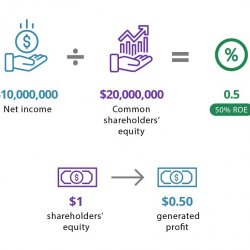a biased view of what is the oldest car a bank will finance

Both provisions ended after one year, although subsequent legislation extended these short-term provisions, which eventually ended up being permanent. The incentive for the act originated from the governors of the Federal Reserve Board (Eugene Meyer) and the Federal Reserve Bank of New York (George Harrison). In January 1932 the pair ended up being convinced that the Federal Reserve Act should be changed to enable the Federal Reserve to provide to members on a larger series of properties and to http://dantechos230.iamarrows.com/6-simple-techniques-for-how-much-do-finance-managers-make-at-car-dealerships increase the supply of cash in circulation. The supply of money was restricted by laws that needed the Federal Reserve to back cash in flow with gold held in its vaults.
Governors and directors of several reserve banks worried about their free-gold positions and stated this concern numerous times in the latter part of 1931 and early 1932 (Chandler 1971, 186). Meyer and Harrison consulted with bankers in New york city and Chicago Get more information to talk about these concerns and get their support. Then, the pair approached the Hoover administration and Congress. Sen. Carter Glass at first opposed the legislation, due to the fact that it contravened his industrial loan theory of money development, however after discussions with the president, secretary of treasury, and others, ultimately consented to co-sponsor the act. About these discussions, Herbert Hoover wrote, An amusing thing about this act is that though its purpose was to avoid imminent disaster, the economy being by now in a state of collapse, the objection was raised that it would be inflationary.
Senator Glass had this fear and was zealous to prune back the "inflationary" possibilities of the step (Hoover 1952, 117). Within a couple of days of the passage of the act, the Federal Reserve let loose an expansionary program that was, at that time, of unprecedented scale and scope. The Federal Reserve System bought almost $25 million in federal government securities weekly in March and almost $100 million each week in April. By June, the System had acquired over $1 billion in government securities. These purchases offset huge circulations of gold to Europe and hoarding of currency by the public, so that in summer season of 1932 deflation ceased.
Commercial production had actually begun to recuperate. The economy appeared headed in the best direction (Chandler 1971; Friedman and Schwartz 1963; Meltzer 2003). In the summertime of 1932, however, the Federal Reserve ceased its expansionary policies and ceased buying substantial quantities of federal government securities. "It seems likely that had the purchases continued, the collapse of the financial system during the winter season of 1933 may have been prevented" (Meltzer 2003, 372-3).
Unemployed males queued outside an anxiety soup kitchen area in Chicago. Eventually, the dire scenario, and the fact that 1932 was a governmental election year, persuaded Hoover decided to take more drastic steps, though direct relief did not figure into his strategies. The Restoration Financing Corporation (RFC), which Hoover authorized in January 1932, was developed to promote self-confidence in service. As a federal company, the RFC loaned public money directly to numerous having a hard time companies, with the majority of the funds allocated to banks, insurance business, and railroads. Some cash was likewise earmarked to offer states with funds for public building tasks, such as roadway building and construction.
Today, we would call the theory behind the RFC 'trickle-down economics.' According to the theory, if federal government pumped cash into the top sectors of the economy, such as huge organizations and banks, it would trickle down in the long run and help those at the bottom through chances for employment and purchasing power. Supporters felt the loans were a method to 'feed the sparrows by feeding the horses'; critics referred to the programs as a 'millionaires' dole.' And critics there were: lots of noted that the RFC supplied no direct loans to towns or people, and relief did not reach the most clingy and those suffering the most.
Some Ideas on Which Of The Following Can Be Described As Direct Finance? You Need To Know
Wagner, asked Hoover why he refused to 'extend an assisting hand to that miserable American, in very town and every city of the United States, who has been without salaries given that 1929?' On the positive side, the RFC did prevent banks and services from collapsing. For instance, banks were able to keep their doors open and secure depositors' cash, and organizations avoided laying off much more employees. The wider effects, however, were minimal. A lot of observers concurred that the positive impact of the RFC was relatively small. The viewed failure of the RFC pressed Hoover to do something he had always argued versus: supplying government cash for direct relief.

This measure authorized the RFC to lend the states as much as $300 million to provide relief for the Timeshare Exit Strategy out of work. Little of this money was actually invested, and many of it ended up being spent in the states for building projects, rather than direct payments to individuals. Politically, Hoover's usage of the RFC made him appear like an insensitive and out-of-touch leader. Why provide more cash to services and banks, many asked, when there were millions suffering in the streets and on farms? Though Herbert Hoover was not callously indifferent to numerous Americans' circumstance, his rigid ideology made him seem that method.
Roosevelt in the election of 1932 and the execution of the latter's New Deal. Franklin D. Roosevelt in 1933. In the midst of the Great Anxiety, President Herbert Hoover's philosophy of cooperative individualism revealed little signs of effectiveness. As the crisis deepened, and as a governmental election loomed, Hoover helped develop the Reconstruction Financing Corporation, a federal agency focused on restoring confidence in company through direct loans to major business. Formed in 1932, the RFC was wholly insufficient to meet the growing problems of economic depression, and Hoover suffered defeat at the surveys in 1932 to Franklin Roosevelt, a male not shy about utilizing the power of the federal government to attend to the problems of the Great Depression.
Restoration Finance Corporation (RFC), former U – How to find the finance charge.S. government agency, created in 1932 by the administration of Herbert Hoover. Its function was to facilitate financial activity by lending money in the depression. Initially it provided money just to financial, commercial, and farming organizations, however the scope of its operations was significantly expanded by the New Offer administrations of Franklin Delano Roosevelt. It funded the construction and operation of war plants, made loans to foreign federal governments, offered defense versus war and disaster damages, and participated in numerous other activities. In 1939 the RFC merged with other companies to form the Federal Loan Company, and Jesse Jones, who had long headed the RFC, was selected federal loan administrator.
When Henry Wallace succeeded (1945) Jones, Congress eliminated the company from Dept. of Commerce control and returned it to the Federal Loan Company. When the Federal Loan Company was abolished (1947 ), the RFC presumed its many functions. After a Senate examination (1951) and in the middle of charges of political favoritism, the RFC was abolished as an independent company by act of Congress (1953) and was transferred to the Dept. of the Treasury to wind up its affairs, effective June, 1954. It was completely disbanded in 1957. RFC had actually made loans of roughly $50 billion given that its development in 1932. See J – What credit score is needed to finance a car. H.






Ingen kommentarer endnu